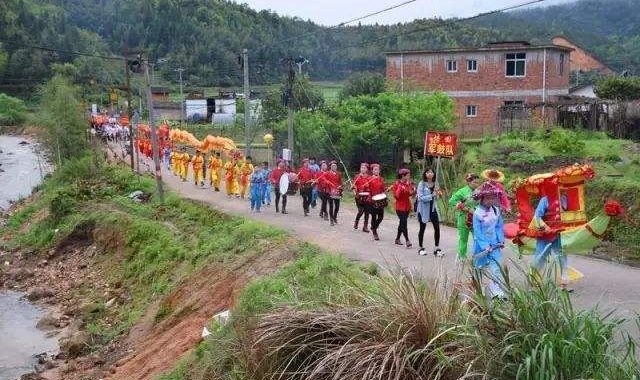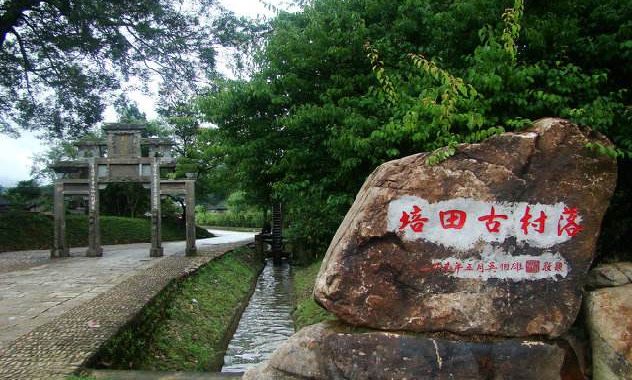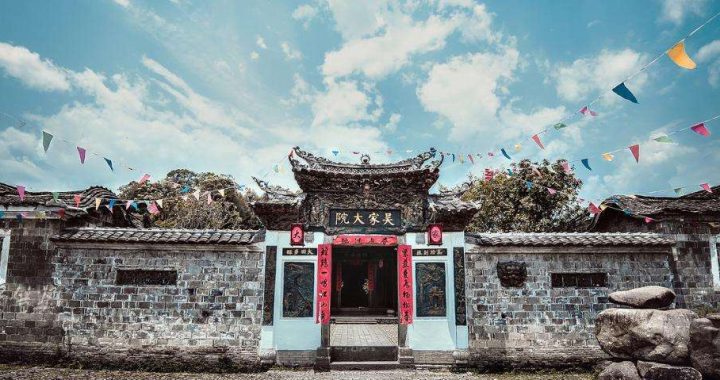Hakka Community College
6 min readIn a sense, Hakka Culture represents a microcosm of the integration of the Central Plains (or Central China) and native southern cultures after the large-scale immigration in the fourth century of northerners to the south. The so-called Yongjia Disaster in 311 and the Five Barbarian Tribes’ uprising (316-439) sparked a mass migration from CentralChinato the south to avoid brutal wars. Migrants drifted from place to place, homeless and desolate, but their suffering also inspired in them greater efforts toward family solidarity. Upon eventually finding a place in which to live and work in peace and contentment they both strengthened family cohesion and agricultural production and gave utmost priorit to books and learning, studying hard to help the family prosper. The tradition of attaching importance to learning, farming, and cultivation of one’s moral character and family cohesiveness is reflected in all aspects of Hakka life, such as architecture, education, customs, daily routine, and sociallife.Today, the attention of scholars, experts, media representatives and philanthropists has polarized in explorations of Peitian’s long history and profound culture. Accordingly, in 2011, Hakka Community College was establishedin efforts to combine tradi-tional civilization and modern education, find out more about Peitian culture, and push it on orward in the new era.
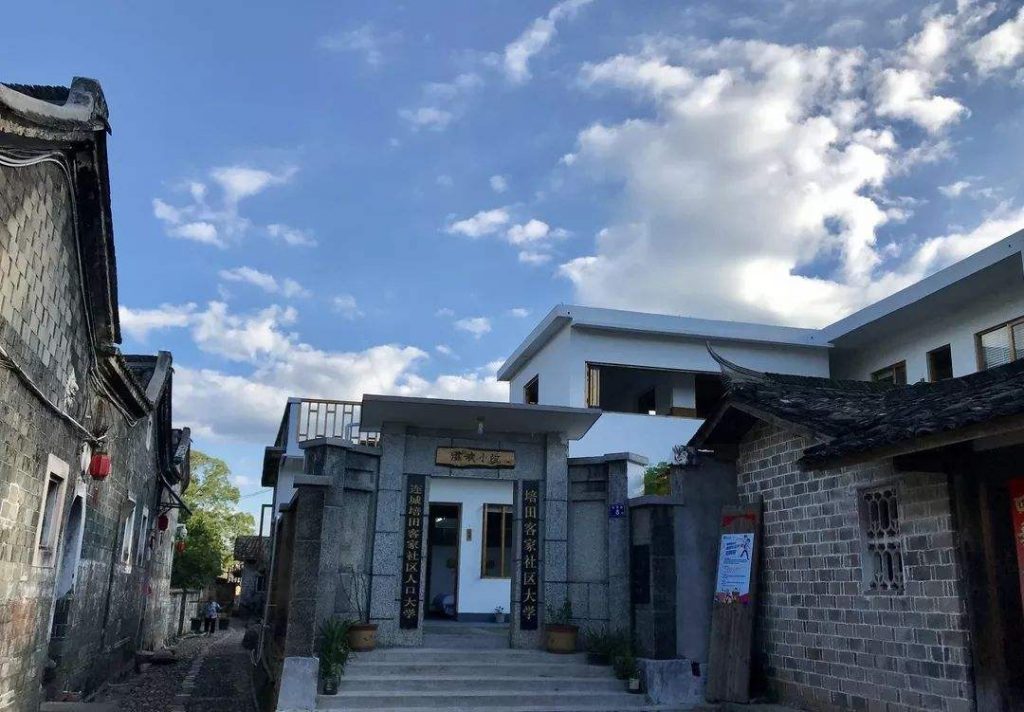
In July 2010, Qiu Jiansheng,a teacher at the College of Economics of Fujian Agricultural and Forestry University, headed the first group of volunteers that came to Peitian. With the support of the local government, they held the first summer camp and organized villagers’ participation in cultural and recre-ational activities, so launching the prelude to the community college. On January 8,2011, Hakka Community College of Peitian was formally founded after a half-year preparation.
Hakka Community College of Peitian is sponsored by Beijing Western Sunshine Rural Education Development Foundation, the 21st Century Education Research Academy, the Countryside Construction Center of Renmin University of China, Beijing Brooks Education Advisory Center, the Y.C. James Yen Civil Education Development Center, the Sino Farmer Foundation Limited, and the local government, and funded by Fujian Zhenro Group. The college undertakes explorations of the theory and practice of mass education and countryside construction according to the actual situation, under the guidance of the national policies of new countryside construction and education development. Moreover, it assists in the development of localeconomy, education, culture, public health and population, systematically sorts out, investigates and studies Hakka history and culture, and trains and fosters gifted Hakka students. In other words, the purpose of the college is to act as a base and international communication center for Hakka culture.
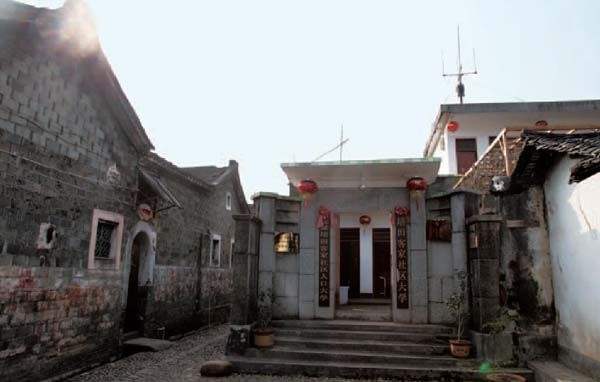
As a non-profit social organization, the community college recruits college student volunteers as teachers, supplemented by scholars, experts and professors who are invited from time to time to give lectures or classes to local villagers according to their needs.
The college emphasizes four focal points of countryside construction-education, recreation, craftsmanship, and rural economy. That of education is aimed at children and young adults. Peitian Primary School was on the brink of collapse some years ago. In 2014, after much negotiation with local government education departments, the school was refurbished, and the grade one to six primary education system restored.
The community college has set up two women’s dance groups. One is the Pan Drum Dance Team, composed of women in their 3os and 40s, and the other the Waist Drum Dance Team, whose members are women of 60 and above Local residents sponta-neously organize dancing in the village square. The women’s dance groups are responsible fortheir own profits and losses. In addition to performing in Peitian Village, the Pan Drum Dance Team often gives paid performances in neighboring villages.”This both enriches their cultural life and increases their incomes,”chief secretary of the college Zhang Qi said.
The community college also focuses on the village elders who are childless and unable to support themselves.
Measures taken to help them include establishing China’s first non-profit canteen for seniors.
Another major task of the community college is to help the village economy, such as by organic farming and tourism with distinctive Hakka features, to increase local incomes. Therefore, villagers over 18 who are keen to train in agricultural skills and/or tourism can attend classes free of charge.
The community college encourages villagers to start their own undertakings. It caters to their different needs and adopts flexible teaching methods. For instance, it often organizes tours to other places to help broaden villagers’ outlook and learn from their experiences.
Volunteers also use the Internet to advertise villagers’ agricultural produce, such as honey, mushrooms, etc., online. They have held the Spring Plowing Festival for two consecutive years to promote the abundant local tourism resources and profound farming culture, drawing more tourists and stimulating the local economy.
So far, almost all villagers have undergone some type of training at the community college. And Peitian Village, which formerly solely cultivated rice, is in the process of developing a multi-functional economy that features sightseeing and ecological agriculture. Villagers now grow a variety of economical crops like rape, grapes, strawberries, and the seedlings of exotic plants, and also engage in agritainment. This has raised the average local income from 3,000 yuan($470)a year of a couple of years ago to its present 7,000($1,100) yuan.
Peitian Community college also pays attention to reviving the traditional handicrafts that have fallen preyto modernization and industrialization. In October 2015, chief secretary of the college, Zhang Qi, used crowd-fundingto raise the money necessary to renovate Peitian’s Zhuyu Pavilion. His advocacy supported by 197 net friends, he eventually raised 50,000 yuan($7,800) within 20 days. Zhang Qithen invited modern designers and architectst join in, give their opinions, and cooperate with local bamboo craftsmen to finish the project. It is in such ways that the college hopes to perpetuate Peitian’s traditional handicrafts.
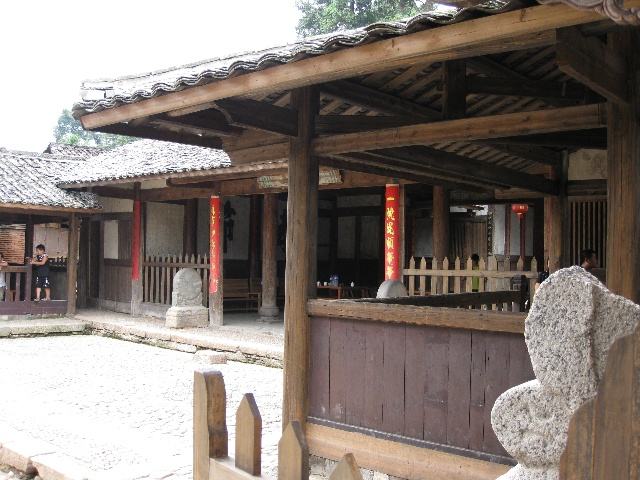
other Peitian folk arts are also being revivified. They include Peitian puppetry, Shifan-music played on 10 musical instru-ments-wind and drum music, root carvings, paper cuts, and dragon lanterns.
of all the arts, Shifan is the most famous. The shifan ensemble in Peitian comprises 10 players, each of whom plays a different instrument. Shifan also means teamwork, whereby on some occasions each musician might play more than one of the ensemble’s traditional Chinese musical instruments, such as the yangqin (or Chinese dulcimer), dizi (or bamboo flute), erhu(atwo-stringed bowed musical instrument), gaohu and dihu, sanxian, gong and sometimes the suona horn, any of which can take center stage, depending on the music. Owing to the lower outlay, the zhonghu often substitutes for the dihu. The ensem-ble’s newest instruments were bought 10 years ago. However, the shifan is indispensible to Peitian villagers on important occasions such as weddings, elders’ birthday celebrations and temple fairs, and adds joy to each event.
The history of Peitian puppet shows goes back to the end of the Qing Dynasty. They originally comprised 18 puppets, which is why the show is known as The 18 Arhats. There are four main traditional roles in it: the sheng (male), dan (female) jing(painted face) and chou(clown). Later, the puppets were enlarged to three times their original height of 0.33 meter to 1 meter, and their number doubled to 36. They are manipulated from above through more than a dozen strings attached to their limbs. Puppet plays are performed to the accompaniment of western Fujia Han Opera tunes, while the libretto is in the local Peitian dialect, which evokes frequent gales of laughter from the audience. The villagers so enjoy puppet productions that play throughout the night. As one poet wrote,”The crowd was spell-bound by the superb performance, and the puppets moved so convincingly as to appear human. Loud cheer rang out continu-ously along with the flute and drum, and no one realized dawn had arrived until they looked to the eastern sky.”
The annual Spring Plowing Festival, held by the community college, is a meeting platform for exploring rejuvenation of rural culture, countryside civilization, as well as a prosperous and flourishing activity. The purpose ofthe festival is to commem-orate ancient sages and saints, eulogize the farming culture, and construct ecological culture through emphasizing the combi-nation of both farming practice and learning, and man and nature. Festival activities include hand plowing in the field, rural handicrafts exhibition, Peitian snacks competition, recreational performances, and night chats around the stove.
